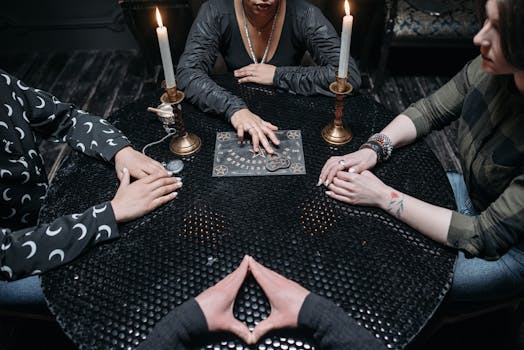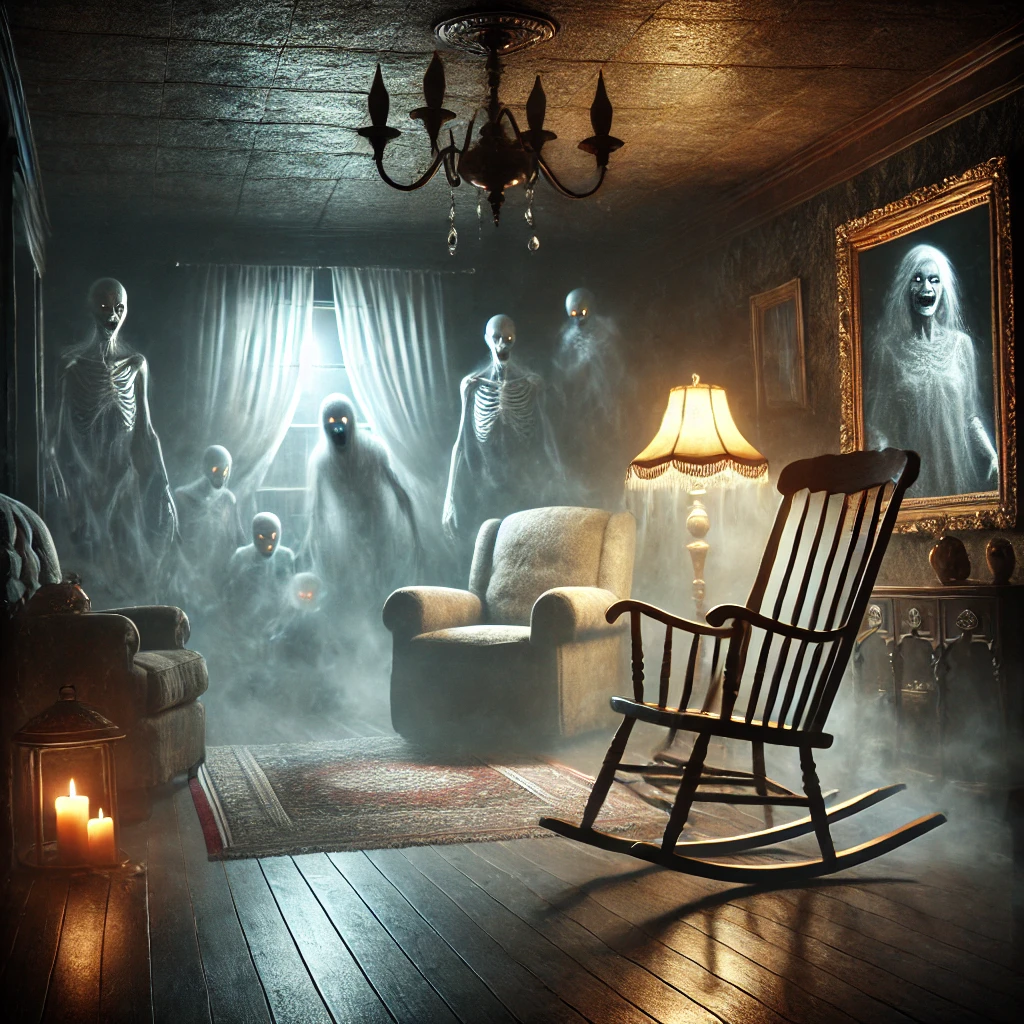Discover the truth behind the Mandela Effect in this deep dive into whether it’s a paranormal phenomenon or simply false memory. Explore real examples, theories, and expert insights.
Have you ever remembered something so clearly, only to find out it never happened the way you thought?
Welcome to the mysterious world of the Mandela Effect.
Named after the widespread false memory of Nelson Mandela dying in prison in the 1980s, this strange phenomenon has left people questioning reality itself.
From movie quotes to product logos, countless individuals share the exact same incorrect memories.
But why? Is it just the brain playing tricks, or could something paranormal be going on?
The Mandela Effect has taken the internet by storm, raising eyebrows and sparking heated debates.
While skeptics blame faulty memory and suggest it’s all just a psychological glitch, others believe it might point to alternate realities, time shifts, or even evidence of a parallel universe.
Is it a paranormal event or just a mind-bending case of collective misremembering?
Whether you’re a curious skeptic or a firm believer in the supernatural, understanding the Mandela Effect means digging into both science and the unexplained.
More Articles
The Science Behind Ghosts and Hauntings
Is Your Spirit Guide Trying to Contact You
Contents
- Mandela Effect Explained: Paranormal Event or False Memory?
- Introduction
- What Is the Mandela Effect?
- Famous Mandela Effect Examples
- Is It Just a Faulty Memory?
- Paranormal and Supernatural Theories
- Step-by-Step Guide to Investigating the Mandela Effect
- The Mandela Effect as a Window into Reality
- Conclusion of the Mandela Effect Explained: Paranormal Phenomenon or False Memory?
- Tips, Methods, and Strategies to Understand the Mandela Effect
- Helpful Resources to Assist Your Research
- Related YouTube Video: 🎥 The Mandela Effect Explained: Are We Experiencing Alternate Realities?
- The Paraghosts Blog
Introduction to the Mandela Effect: Paranormal Mystery or Faulty Memory?
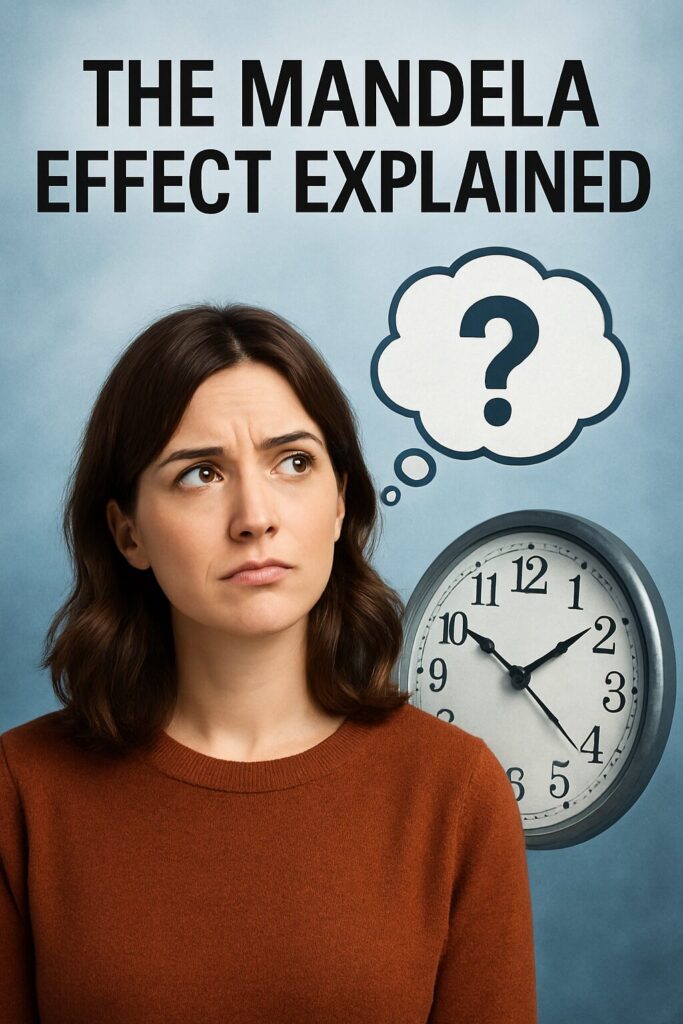
Have you ever been completely sure about a memory, only to find out you were wrong, and not just you, but thousands of other people remember it the exact same way?
That’s the strange and fascinating experience known as the Mandela Effect.
This bizarre phenomenon is named after Nelson Mandela because so many people around the world vividly remember him dying in prison during the 1980s.
In reality, Mandela was released from prison and went on to become the president of South Africa in the 1990s.
So how is it possible that so many people remember something that never happened?
Some believe the Mandela Effect is a sign of something deeper, possibly even paranormal.
There are theories about alternate realities, time slips, and multiverse crossovers.
Others argue it all comes down to how our brains work, how memories can be easily distorted, and how false memories can spread across large groups of people.
Whether you think it’s a glitch in the matrix or just collective confusion, one thing is clear, the Mandela Effect challenges how we see truth, memory, and even reality itself.
In this article, we’re going to explore the Mandela Effect from every angle.
We’ll look at real-life examples, compare explanations from science and the supernatural, and help you decide for yourself.
Is the Mandela Effect just a case of false memories, or is it a real paranormal event that points to something far more mysterious?
Either way, what you’re about to read might make you question everything you thought you knew.
Mandela Effect Explained: Paranormal Event or False Memory?
A Deep Guide to Understanding the Mystery Behind Shared False Memories
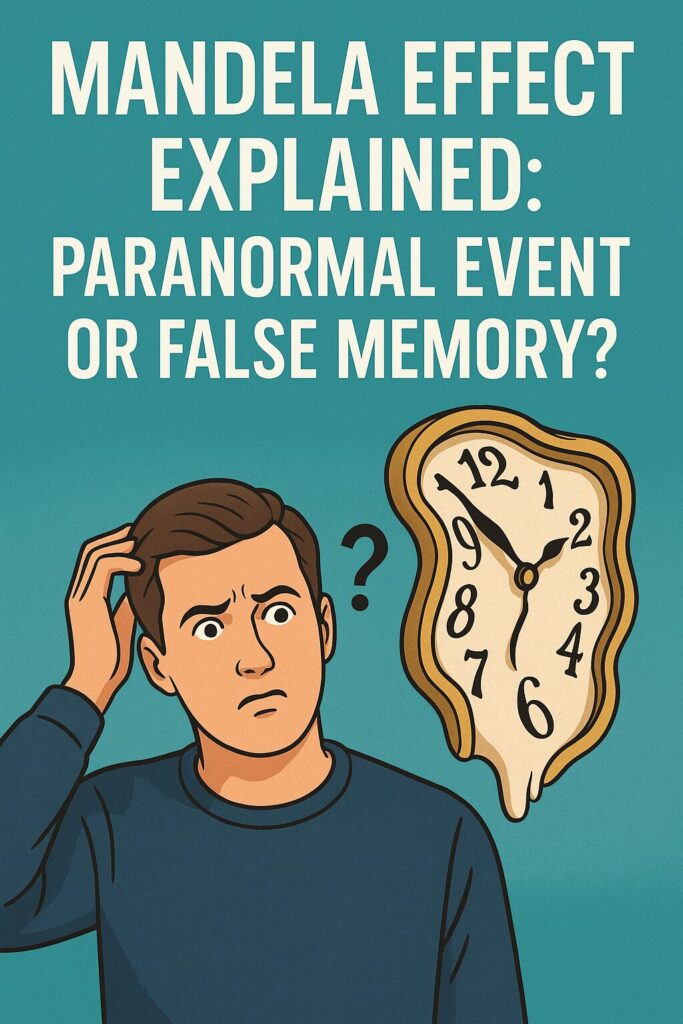
Introduction
Have you ever been so sure about something that when you find out you were wrong, it leaves you stunned?
That feeling, especially when it’s shared by thousands or even millions of people, is what makes the Mandela Effect such a fascinating mystery.
It goes beyond simple forgetfulness. This strange phenomenon gets its name from the widespread belief that Nelson Mandela died in a South African prison during the 1980s.
In reality, he was released in 1990 and became the President of South Africa in 1994. Yet, so many people vividly remember hearing about his death decades earlier.
That shared false memory sparked a larger conversation: Is there something paranormal happening?
Could our memories be revealing a deeper truth about reality?
This guide will walk you through every angle of the Mandela Effect.
From psychology to paranormal theories, we’ll break down what it really is, why it happens, and how to explore it for yourself.
Whether you’re a researcher, paranormal enthusiast, or just curious about how reality might not be as solid as it seems, you’ll find detailed steps and insights to deepen your understanding.
What Is the Mandela Effect?
Defining the Mandela Effect
The Mandela Effect refers to the bizarre situation where large groups of people remember the same event or detail incorrectly.
These are not vague or subtle memories. They’re usually strong, clear, and shared by others across the globe.
Fiona Broome coined the term after discovering that many people, like herself, remembered Nelson Mandela dying in prison, something that never happened.
What makes the Mandela Effect so strange is the sheer number of people who remember the exact same incorrect details.
This phenomenon raises the possibility that our perception of reality may be more fluid than we thought.
It’s not just a random memory glitch. It’s a collective experience that challenges the boundaries between memory, consciousness, and the very structure of reality itself.
Famous Mandela Effect Examples
1. Mandela’s Death in the 1980s
This is the case that started it all. Millions around the world believe they saw news reports and funeral coverage of Nelson Mandela dying in prison. But historical records show he lived for decades after his release. How can so many people share a memory that never happened? Why does the Mandela Effect seem more common now? It appears to be happening more frequently than it did in the past.
2. Berenstain Bears vs. Berenstein Bears
One of the most famous examples. Many people swear the children’s book series was spelled “Berenstein” with an e. But it has always been spelled “Berenstain” with an a. People feel betrayed by their memory, claiming they saw the spelling with an e their entire childhood. This collective misremembering is what makes the Mandela Effect so powerful. It’s not one person—it’s thousands.
2. “Luke, I am your father.”
This iconic line from Star Wars is often quoted incorrectly. Most people remember Darth Vader saying, “Luke, I am your father.” But the actual line is, “No, I am your father.” The change may seem small, but for those who grew up with the movies, the difference feels huge—and unsettling.
3. The Monopoly Man’s Monocle
Ask someone to describe the Monopoly Man. Most will mention a top hat, a cane, and a monocle. The problem? He’s never worn a monocle. The brain fills in that detail because it fits the stereotype of a wealthy, old-time character. This is a textbook example of how the Mandela Effect works.
4. Pikachu’s Tail
Pikachu, the famous Pokémon, is often remembered with a black-tipped tail. In every official version of the character, the tail is entirely yellow. People swear they remember the black tip and even draw it that way. This adds another layer to the Mandela Effect’s strange hold over pop culture memory.
6. Mirror, Mirror on the Wall” – A Line That Never Was
Most people remember the famous line from Disney’s Snow White as “Mirror, mirror on the wall, who is the fairest of them all?” In reality, the original Disney version says, “Magic mirror on the wall.” This discrepancy between memory and actual dialogue is often cited as another strong example of the Mandela Effect, confusing even lifelong Disney fans.
7. Febreze vs. Febreeze
Many consumers recall the household air freshener as Febreeze, with a double “e.” But if you look closely at the product label, it’s spelled Febreze—just one “e” in the second half. The extra “e” seems natural because of the word “breeze,” which adds to the confusion. This false spelling is so convincing that even seasoned shoppers get it wrong.
8. Looney Tunes or Looney Toons?
Most people assume the classic cartoon series is spelled Looney Toons, short for cartoons. In reality, it’s spelled Looney Tunes, referring to musical tunes. The confusion makes sense, especially because shows like Tiny Toon Adventures did use the “Toons” spelling. This visual and phonetic mix-up has puzzled fans for decades.
9. Fruit of the Loom Cornucopia Confusion
Many remember the Fruit of the Loom logo featuring a cornucopia, or horn of plenty, spilling out fruit. But the official logo has never included one. Despite this, people insist they saw it that way, and some even claim to recall seeing the cornucopia in commercials and product packaging from their childhood. This false logo memory remains one of the most compelling Mandela Effects involving branding.
10. Curious George’s Missing Tail
Curious George, the curious little monkey, is often remembered swinging from his tail or using it for balance in illustrations. Shockingly, Curious George has never had a tail. This Mandela Effect has caused many to reevaluate their childhood memories and raises questions about how vivid and detailed our false memories can be.
These are just a few examples of the Mandela Effect, but they barely scratch the surface.
There are countless other cases where people remember events, names, or details differently from how they actually occurred.
The more you explore, the more strange and fascinating examples you’ll find.
Is It Just a Faulty Memory?
How Human Memory Works
Human memory is far from perfect.
Unlike a video recorder, the brain doesn’t capture and replay exact moments.
Instead, it reconstructs memories every time we recall them.
This makes our memories vulnerable to distortion, suggestion, and even manipulation.
Each time a memory is recalled, it’s stored again in a slightly new form.
If the details are fuzzy, your brain fills in the blanks using logic, past experiences, or social cues.
This is known as reconstructive memory, and it’s the foundation of many Mandela Effect cases.
Psychological Explanations for the Mandela Effect
There are several psychological theories that explain why people share false memories:
- Confabulation:
This is when the brain fills in missing details without intending to deceive. It’s not a lie—it’s a mental shortcut that feels completely true to the person remembering. - Schema Theory:
Our brains organize knowledge into mental frameworks called schemas. When we recall something, our brains use these schemas to make sense of it. If the actual memory doesn’t match the schema, the brain adjusts it to fit. - Confirmation Bias:
Once someone believes a certain memory is real, they tend to seek out others who confirm that belief. This reinforces the false memory and spreads it to more people. - Social Reinforcement:
Shared experiences become social truths. If enough people remember it incorrectly, it begins to feel like reality.
These explanations support the idea that the Mandela Effect is rooted in how the brain works, not in glitches in reality. But not everyone is convinced.
Paranormal and Supernatural Theories
Alternate Realities and Multiverse Theory
One of the most compelling paranormal explanations is the idea of parallel universes.
This theory suggests that our world is one of many co-existing realities.
Sometimes, people may accidentally shift into a timeline where things are slightly different.
This could explain why certain people remember Mandela dying in prison, while others don’t.
They may have come from a different version of history altogether.
The multiverse theory has gained credibility among both physicists and paranormal researchers.
It offers a potential explanation for shared false memories that cannot be easily dismissed.
Time Slips and Quantum Shifts
Another theory links the Mandela Effect to quantum mechanics.
According to some interpretations, tiny fluctuations in atomic particles might create alternate timelines.
If these timelines shift or merge, people could experience brief time slips, leading to different memories from the current reality.
Some paranormal investigators suggest these shifts are natural but invisible.
When a shift happens, everything looks the same on the surface but the details are slightly off.
Over time, these minor differences can add up, creating the Mandela Effect.
Simulation Theory
Simulation theory suggests our universe is a computer-generated environment, and glitches in this system could be the cause of false memories.
Just like a bug in a video game, these memory discrepancies could be signs that the program running our universe has errors or is being updated.
This idea isn’t as far-fetched as it sounds.
Researchers like Nick Bostrom and even Elon Musk have supported the possibility that we live in a simulation.
In that case, the Mandela Effect might not just be about memory. It could be evidence that reality itself isn’t real.
Step-by-Step Guide to Investigating the Mandela Effect
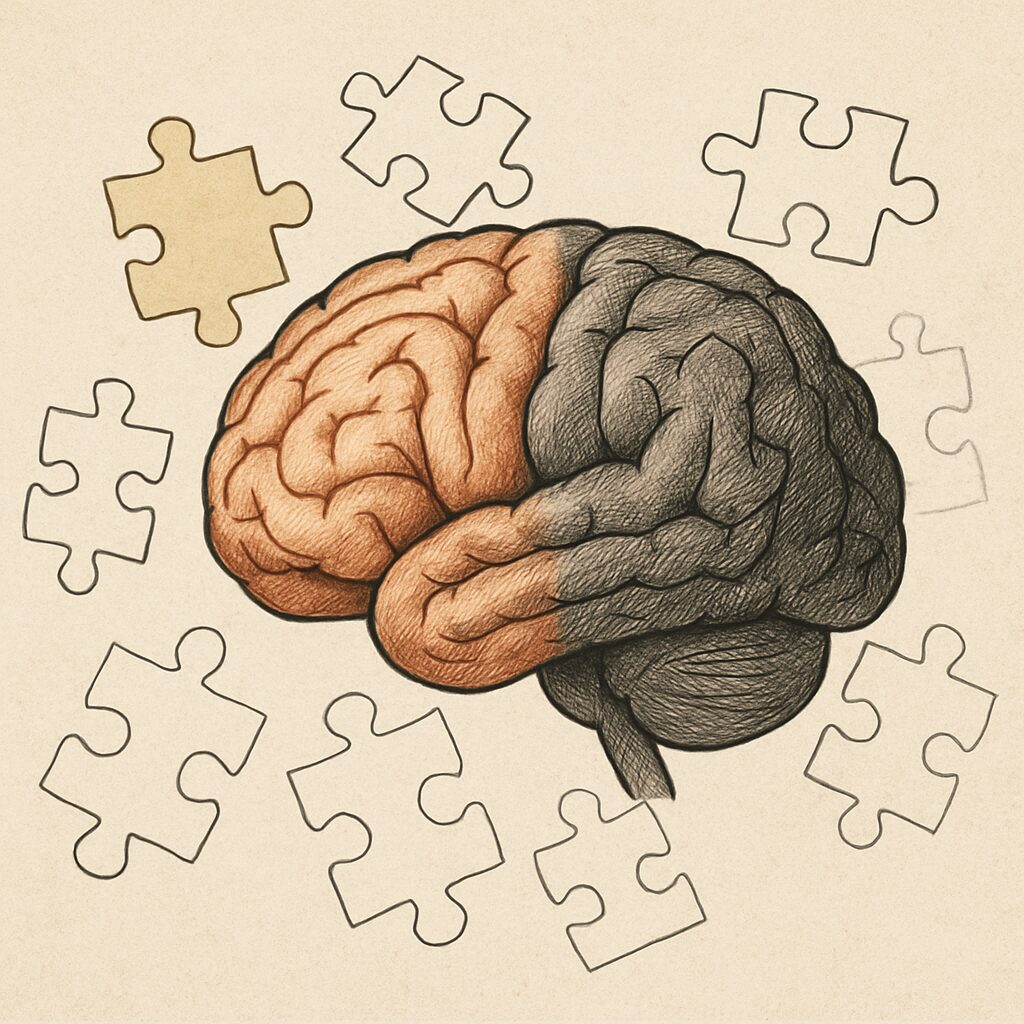
Step 1: Document What You Remember
Start by writing down your version of common Mandela Effect examples. List the ones you clearly remember being different. Don’t second-guess yourself. The purpose is to capture your raw, unedited memory.
Step 2: Compare Your Memory with Reality
Now, research the official versions. Look up videos, articles, or books. Pay close attention to spelling, dialogue, logos, and visuals. This step helps you measure how your memory aligns or conflicts with real-world facts.
Step 3: Research the Psychology of Memory
Read about memory reconstruction, cognitive psychology, and false memory formation. Understanding how your mind works is crucial. Learn how social media, repetition, and group thinking reinforce false memories.
Step 4: Explore Paranormal Theories
Take time to study the metaphysical side. Dive into topics like multiverse theory, simulation theory, quantum consciousness, and time slips. Read books, listen to podcasts, and explore the experiences of others who believe the Mandela Effect is paranormal in nature.
Step 5: Join Online Communities
Forums like Reddit’s r/MandelaEffect or niche Facebook groups offer a place to discuss your findings. Talking with others helps validate your experiences and opens the door to new theories and examples you may not have heard of.
Step 6: Form Your Own Conclusion
After reviewing both scientific and supernatural explanations, decide where you stand. You don’t need to believe in only one theory. Some people believe it’s both—a mix of faulty memory and metaphysical mystery.
The Mandela Effect as a Window into Reality
Whether the Mandela Effect is a quirk of memory or evidence of something greater, it opens our minds to new possibilities.
It forces us to question how we perceive reality, time, and consciousness.
Even if it starts with something as simple as a children’s book title or a movie quote, it ends with some of the biggest questions of all.
Is our memory reliable? Is our reality stable? Or are we living in a constantly shifting universe where nothing is quite what it seems?
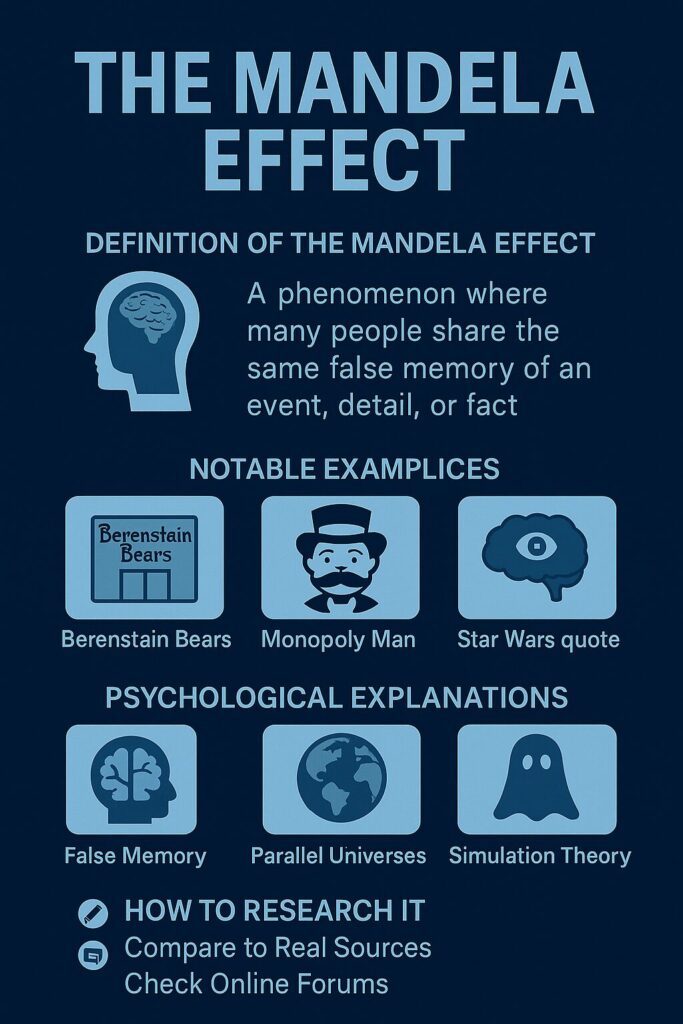
Conclusion of the Mandela Effect Explained: Paranormal Phenomenon or False Memory?
The Mandela Effect continues to challenge what we think we know about memory and reality.
Whether it’s a simple case of false memory or a sign of something paranormal, one thing is clear, it makes us question how the mind works and what’s really real.
From shared misquotes to altered brand names, the Mandela Effect forces us to look closer at our world and our place in it.
Some believe it points to alternate timelines or shifts in reality. Others see it as proof that our memories aren’t as reliable as we’d like to believe.
No matter where you stand, exploring the Mandela Effect opens the door to deeper questions about memory, consciousness, and the nature of the universe.
Tips, Methods, and Strategies to Understand the Mandela Effect
1. Start by Trusting Your Memory—Then Challenge It
Begin by writing down exactly what you remember. Be specific. Focus on details like spelling, quotes, visuals, or timelines. This is your personal Mandela Effect record.
Now, look up the current, confirmed version of that memory. Compare them side by side.
2. Search for Shared Experiences
Use online forums like Reddit’s r/MandelaEffect, Facebook groups, or YouTube comments. Look for people who share the same false memory. The more people who remember it the same way, the stronger the case for something unusual.
Check if the memory has been documented widely. If it has its own name or thread, it’s a well-known Mandela Effect case.
3. Investigate Psychological Explanations
Study how memory works. Our minds don’t record events like a video. Instead, we reconstruct memories. That makes them vulnerable to distortion.
Research topics like:
- Confabulation – the brain fills in missing info with guessed details.
- Reconstructive Memory – memories are rebuilt, not replayed.
- Schema Theory – our mind uses patterns and expectations to “fill in the blanks.”
- False Memory Syndrome – people vividly remember things that never happened.
Understanding these will show you how real a false memory can feel.
4. Explore Paranormal Theories with an Open Mind
Paranormal explanations offer a different angle. Many believe that the Mandela Effect is proof of:
- Alternate timelines
- Parallel universes
- Quantum shifting
- Reality glitches
- Simulation theory
Research these using trusted paranormal blogs, metaphysical forums, and science documentaries. Look into CERN, quantum physics, and multiverse theory.
5. Use Reverse Image and Video Searches
Visual Mandela Effects often involve logos, brand names, or famous scenes. Use tools like:
- Google Image Search
- Tineye.com
- YouTube movie scene comparisons
Look for past evidence of your memory. Sometimes, older versions or clips support the “alternate” version people remember.
6. Talk to People You Trust
Ask friends, family, or coworkers how they remember the event. Don’t lead them. Just ask open-ended questions. Write down their responses.
This helps confirm if your memory is widely shared or just personal.
7. Look for Timeline Clues or World Events
Many believers say timeline shifts come with strange feelings or world changes. They report moments where things “just feel off.”
Research historical events around the time your memory changed. Some say high-energy experiments (like CERN’s) may affect our perception of reality.
Although unproven, it’s worth noting if your Mandela Effect occurred during or after one of these events.
8. Study Both Science and the Supernatural
To truly investigate if the Mandela Effect is paranormal, you need to understand both worlds. Study memory science and psychological research. Then compare it with quantum theory and paranormal literature.
Try not to dismiss either side too quickly. True understanding comes from exploring all angles.
9. Keep a Mandela Effect Journal
Track all your experiences in one place. Include:
- Date you noticed the change
- What you remembered
- What the current reality shows
- Reactions from others
- Any emotional or physical feelings tied to the memory
This creates a timeline you can analyze over time.
10. Don’t Rely Only on Memory—Use Evidence
Memory is powerful, but flawed. Whenever possible, try to find real evidence. Use web archives (like the Wayback Machine) to see old versions of websites. Watch original TV clips or read old book scans.
Old commercials, movie trailers, and advertisements are some of the best ways to fact-check Mandela Effect claims.
Helpful Resources to Assist Your Research
- Reddit – r/MandelaEffect – A large community sharing new examples.
- YouTube Documentary: The Mandela Effect Explained – Covers paranormal vs psychological views.
The Mandela Effect is one of the most mysterious phenomena of our time.
To find out if it’s paranormal or just a psychological trick, you have to dig deep.
Use evidence, logic, and curiosity. Whether you believe in multiverse theory or just flawed memory, the journey itself is mind-opening.
Related YouTube Video: 🎥 The Mandela Effect Explained: Are We Experiencing Alternate Realities?
This video provides an in-depth exploration of the Mandela Effect, discussing both psychological explanations and theories involving alternate realities.
It examines various examples and offers insights into why large groups of people might share the same false memories.
For a comprehensive understanding of the Mandela Effect, including its origins, notable instances, and the debate between psychological and paranormal explanations, this video serves as an excellent resource.
The Paraghosts Blog
The Mandela Effect continues to blur the line between what we know and what we believe we remember.
Whether it stems from psychological factors, alternate dimensions, or paranormal shifts in reality, one thing is certain, it challenges our understanding of memory and truth.
Exploring this mystery opens the door to deeper questions about consciousness, time, and the very nature of our universe.
If you’re curious about more unexplained phenomena, strange events, or ghostly encounters, keep digging, keep questioning, and never stop searching for answers.
Paraghosts.com

- How to Record EVP on the Jürgenson Frequency - December 28, 2025
- How to Tell if a House is Haunted or Just Old? - December 26, 2025
- How to Tell if an EVP is a Real Voice or Audio Pareidolia - December 19, 2025
